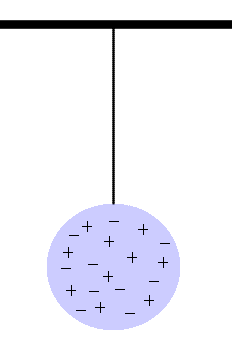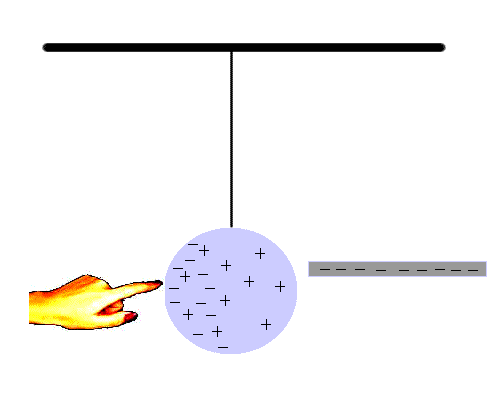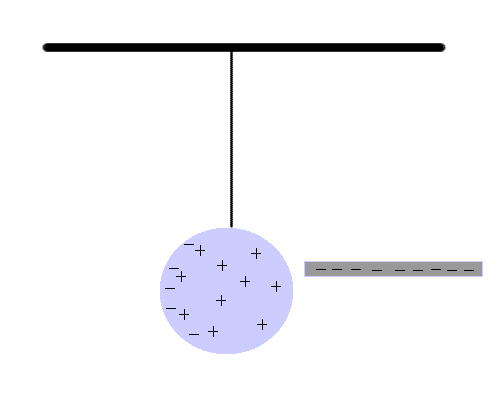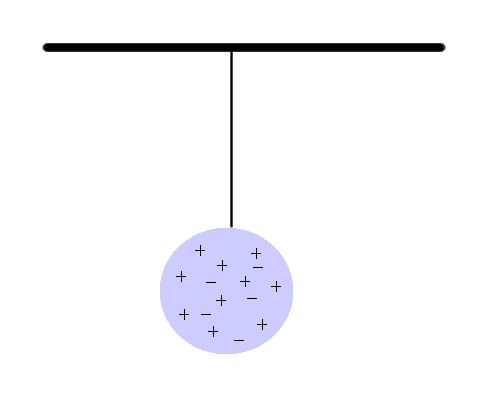Physics > Electricity > How to charge something?
Charging by friction, contact or induction
1) Friction
How to remove electrons from one material and to put them in another? By rubbing them together (as long as one material have the electrons more loosely bound than the other).
Example: Electrons are held more firmly in plastic than in hair. That means that when you comb your hair, electrons pass on from hair to comb. As a result, hair becomes positively charged and the comb becomes negatively charged (it can pick up little pieces of paper).
If the plastic comb is rubbed into silk, it will become positively charged, because the silk has a higher affinity for electrons.
2) Contact
If a neutral object is touched by a charged object, charging of the neutral object will take place. For example, if an object has an excess of electrons (so that it is negatively charged) and touch a neutral object, electrons will pass on to the neutral object. The result is that the neutral object acquires a negative charge and the initially charged object becomes less negative.
3) Induction
In this case, the charged object doesn't touch the neutral object, it only gets close. That causes a separation of charges. Then, another object touches the neutral object and charging takes place.
Example of charging an object by induction: Consider the following sequence of events:

1) A metallic ball is hanging on a line.
Electrons can move freely inside the metal. The ball is initially neutral, as the number of positive and negative charges is equal.

2) A negative rod approaches the ball, so that the electrons move away from it (like charges repel).
If afterwards the rod is moved away, everything comes back to what it was before.

3) Now, a hand touches the ball, on the place where the electrons are concentrated:
The human body is a conductor of electricity, so that the electrons will flow to the hand. If the hand is then removed, it will take these electrons away, leaving the ball charged.

4) Now a smaller number of electrons remains at the ball. There are more positive than negative charges, so that it is positively charged.

5) After the rod moves away, the few negative charges (electrons) left are redistributed:
The ball is now charged by induction. The negative rod has not touched the ball, so that its charge remains exactly what it was after the hand moved away.
Another example of induction charging: the gold leaf electroscope (animation) >>
Take the quiz on ELECTROSTATICS >>
